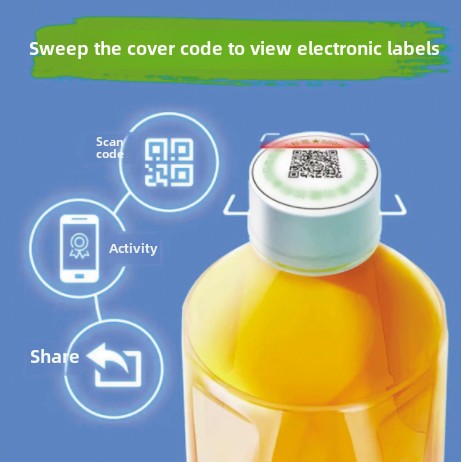Have You Used Smart Packaging?
2024-09-12

Smart packaging, an important branch of modern packaging technology, has gained significant attention in recent years. By integrating advanced sensor technology, communication tech, and materials science, it enhances packaging functionality and improves the consumer experience, becoming a vital channel for communication between businesses and consumers. As consumers increasingly demand transparency and safety, smart packaging is gradually becoming a standard feature across various industries, including food, pharmaceuticals, and electronics. This article will explore the current state of smart packaging, including types of technology, application areas, market trends, challenges, and future development directions.
I. Types of Technology
Smart packaging primarily includes the following technologies:
1. Sensor Technology
Sensors are the core components of smart packaging. They can monitor environmental changes inside the packaging in real time, such as temperature, humidity, and oxygen levels. This capability allows manufacturers and consumers to stay informed about the product's condition. For instance, some food packaging includes temperature sensors that can alert users if the temperature exceeds safe limits, ensuring food safety.
2. QR Codes and NFC Tags
QR codes and Near Field Communication (NFC) tags enable consumers to easily access product information using their smartphones. By simply scanning the QR code on the packaging, consumers can obtain detailed product descriptions, production dates, expiration dates, and usage recommendations. This interactivity not only boosts consumer trust but also strengthens the connection between brands and consumers.
3. Smart Labels
Smart labels can display dynamic information about the product. For example, some pharmaceutical packaging features smart labels that change color as the medication approaches its expiration date, reminding consumers to use it promptly. This function is particularly crucial in the pharmaceutical industry, as it directly affects consumer health and safety.
4. Nanomaterials
Nanotechnology, which involves manipulating components at the nanoscale, represents another revolutionary advancement in packaging technology. Many materials exhibit unique properties at this scale, and utilizing these characteristics helps companies create packaging that is safer, more sustainable, and more reliable. For example, some aerogels made from nanomaterials can provide effective thermal insulation and shock resistance without taking up much space, unlike traditional materials. Other nanomaterials offer biodegradable alternatives to conventional packaging materials like plastics and waxes. Additionally, some logistics companies use nanoparticles to prevent microbial contamination during drug transport.
5. AR Packaging
Augmented Reality (AR) further enhances the interaction between consumers and packaging. AR overlays virtual images onto a real-time view of the physical world. Packaging can leverage this technology by using QR codes to unlock unique AR experiences for customers. Some companies have already employed AR to promote new products or giveaways. When users scan product packaging, they might hear music from a record label's artist or unlock interactive experiences for product giveaways. These unique experiences can encourage more people to purchase products with such packaging, as they want to see the novelty firsthand.
II. Application Areas
Smart packaging has a wide range of application areas, mainly including:
1. Food and Beverage Industry
In the food industry, smart packaging effectively monitors the freshness of products and reduces waste. In recent years, some milk and meat products have adopted packaging with built-in sensors that can monitor temperature and gas composition in real time, ensuring that products are stored in optimal conditions.
2. Pharmaceutical Industry
The pharmaceutical industry has extremely high standards for the safety and reliability of packaging. Smart packaging technology helps monitor the storage conditions of medications, ensuring that they remain effective and undamaged throughout their shelf life. For example, some medication packaging includes sensors that track temperature and humidity, ensuring that the efficacy of the drugs is not compromised by environmental factors.
3. Electronics
In the electronics sector, smart packaging not only provides protection but also prevents tampering and theft. Certain packaging incorporates anti-theft technologies, allowing consumers to verify the authenticity of products through sensors embedded in the packaging.
III. Market Trends

The demand for smart packaging is rapidly increasing, primarily reflected in the following areas:
1. Growing Consumer Demand
As consumers become more concerned about product transparency and safety, the demand for smart packaging has risen. Consumers want to know the source, ingredients, and storage conditions of products to make informed purchasing decisions.
2. Technological Advancements
The rapid development of Internet of Things (IoT) technology in recent years has made smart packaging more accessible and affordable. The cost of smart sensors has gradually decreased, allowing more brands to integrate smart packaging into their products.
3. Increased Investment
More companies are investing in smart packaging technology to enhance their competitiveness. Some large retailers and food manufacturers have started incorporating smart packaging technology into their products to meet market demand.
IV. Future Outlook

The future of smart packaging is promising, with expected developments in the following areas:
1. Broader Application Scenarios
As technology matures, smart packaging will be applied to more products, especially in everyday consumer goods. New application scenarios will continue to evolve to meet changing market demands.
2. In-depth Data Analysis
In today’s and the foreseeable future's digital economy, data is crucial for the survival and growth of businesses. Brand development relies on collecting and analyzing consumer data, and smart packaging will assist companies in leveraging this data for in-depth analysis to optimize supply chain management and marketing strategies. By analyzing consumer behavior, brands can craft more precise market strategies.
3. Sustainability and Environmental Protection
Smart packaging will integrate with sustainable materials, driving innovation in eco-friendly packaging. As consumer awareness of environmental issues increases, adopting sustainable materials in smart packaging will become a new market trend.
Smart packaging is gradually becoming an essential component of the packaging industry due to its unique functionality and user experience. Despite facing some challenges, the prospects for smart packaging remain bright, driven by ongoing technological advancements and growing consumer demand. In the future, smart packaging will not only enhance product safety and transparency but also propel the entire packaging industry toward higher standards.




